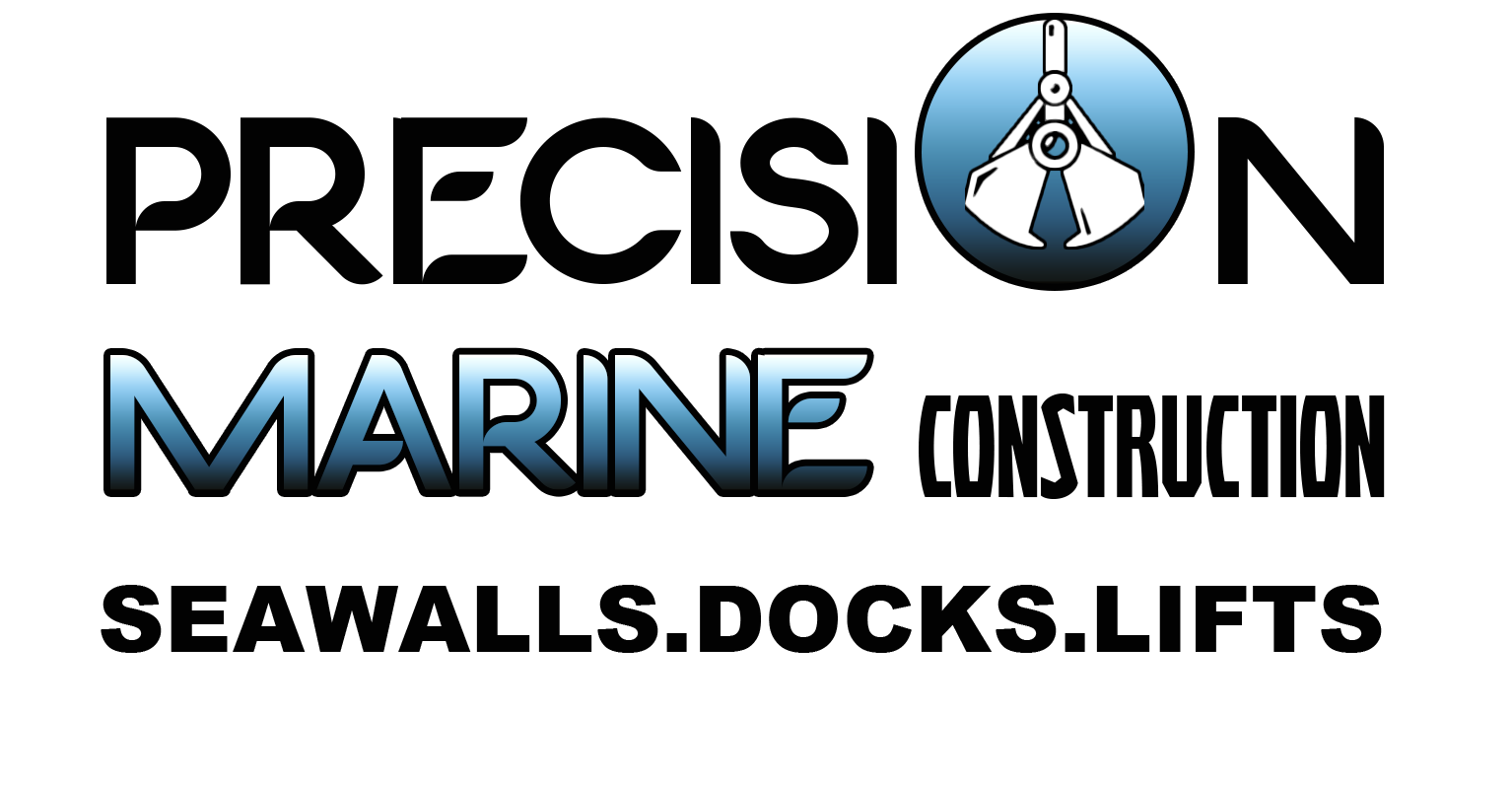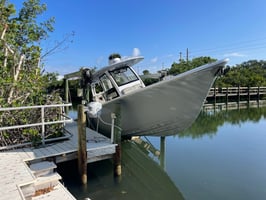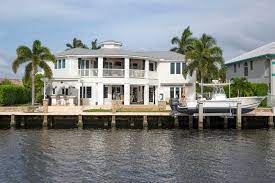Boat lifts make it possible to store and maintain boats safely when they are not in the water. Like...
Boat Maintenance from Basic to Advanced Care
 The maintenance of boats is a necessary evil of life on the water, but it is an evil that often goes unappreciated until something is wrong. From the need to check the water pressure to the need to check the fuel level, the maintenance of our boats is essential for their long-term dependability. As such, we need to understand how to maintain our boats to keep them running at their peak performance. If you’re reading this, you probably know your boat needs maintenance. You may have caught on to the fact that something isn’t quite right with your boat, or you may have just come to that realization yourself. Either way, the maintenance checklist in this article is here to help you get started.
The maintenance of boats is a necessary evil of life on the water, but it is an evil that often goes unappreciated until something is wrong. From the need to check the water pressure to the need to check the fuel level, the maintenance of our boats is essential for their long-term dependability. As such, we need to understand how to maintain our boats to keep them running at their peak performance. If you’re reading this, you probably know your boat needs maintenance. You may have caught on to the fact that something isn’t quite right with your boat, or you may have just come to that realization yourself. Either way, the maintenance checklist in this article is here to help you get started.
What you need to know about regular boat maintenance
Boat maintenance is crucial for keeping your boat running at peak performance. It’s essential to understand the basics of boat maintenance and some of the more advanced procedures if your boat is older than five years. Regular maintenance can prevent major problems, such as breakdowns, fuel leaks, and corrosion. Your boat’s manufacturer probably has maintenance recommendations in your owner’s manual. Some manufacturers have maintenance schedules online, too. Most marinas will be happy to help you look up maintenance information if your boat doesn't have an owner's manual. Depending on your boat’s use and age, you may need less maintenance on a boat that gets used daily than one that sits in storage for months. It’s a good idea to pay attention to your boat’s overall condition and schedule regular maintenance checks for your boat at the same time each year. You can catch any issues early before they become big headaches.
Know the different parts of a boat
The main parts of a boat are its hull, rigging, deck, electronics, and propellers. There may be other parts, such as the steering system or the engine, but these are the critical components of the boat that determine how it performs.
- The hull is the main body of the boat. It is where the bulk of the weight is located and the part of the boat that you can see.
- The rigging is composed of ropes connecting the mast to the lines of the sails, as well as any lines holding the sails up and the spinnaker. It also includes the lines that connect the boat to the dock or another vessel.
- The deck is where the boat sits and comprises the cockpit and any furniture surrounding the seating area.
- The navigation electronics include GPS, electronics for the sails and navigation lights, radar, and sonar.
- The propellers are the rotating parts of the engines that connect to the boat’s electric motors.
What needs maintenance on a boat?
If your boat has been sitting for a long time, it may need more maintenance than if used regularly. This is because the boat has been sitting and is not as used as it once was. If your boat is over five years old, propeller bearings may need to be replaced, and the engine seals. If your boat sits for a shorter time, it may need very little maintenance. This is because the boat has been used regularly and is well maintained. However, you may want to schedule a more thorough inspection of your boat every few years to ensure it is in good shape. Some parts of the boat, such as the propellers, may need to be replaced even if they look fine. This is because of the amount of use they have gotten. It’s important to remember, though, that propellers need to be regularly maintained and may need to be replaced.
Check the fuel level.
This may seem like an obvious step, but you would be surprised how many people don’t keep an eye on their fuel level. The fuel level indicates how much fuel is left in the tank and how long the boat will last if it is left to run out of fuel. Depending on your boat's fuel, you may want to check the fuel level more often if the tank is large. Gasoline and diesel tend to stay consistent regarding how much is left in the tank, but some types of fuel, such as solar, are more variable. You may want to check the fuel level more often if it is more variable than usual.
Check the water pressure.
Water pressure is essential for keeping the hull of the boat from bursting. It is also used in many onboard appliances, such as the toilet and sink, so they work correctly. Water pressure can be checked by opening the faucet and measuring the pressure by putting a ruler against it. Alternatively, you can buy an inexpensive pressure gauge that can be attached to the faucet. If the pressure is low, you may want to call a professional to inspect and repair your plumbing system. This is because low water pressure can lead to corrosion of the hull and other damage to the boat.
Inspect the rigging
The rigging of a boat is the ropes that support the sails and spinnaker. It is the most likely part of the boat to fail, so it is vital to inspect it before it breaks. If you’re planning on using your boat soon, you should inspect the rigging now and ensure it is in good shape to avoid replacing it before you need it. You can inspect the rigging by looking at it closely and checking for signs of wear, such as fraying or dirt. You may also want to inspect the rigging by climbing onto the mast and looking down to get an overall view of the rigging.
Inspect the hull and deck
The hull of a boat is the body of the boat. It is the part you can see and is usually painted or stained. The hull is usually the most critical part of the boat, as it determines how fast or far the boat can travel. The boat's deck is the wooden part that sits on the hull. It is usually composed of plywood or composite material. You can use a brush to clean the deck and inspect it for any cracks or other damage. Most boats need to be inspected for any damage to their hull, as this is the most likely part of the boat to fail. Many boats also need to be inspected for cracks or other damage to their decks, which can lead to leaks and other issues.
Inspect the propellers
Propulsion is the engine of a boat. It includes the engines themselves and the propellers that connect to the engines. The propellers are the rotating parts of the engines that connect to the boat’s electric motors. Propellers need to be inspected and maintained regularly, as they are the most likely part of the engine to break or wear out. You should also regularly inspect the propellers to make sure they don’t have any damage that could cause the propellers to break while they are spinning. You can inspect the propellers by looking closely at them and checking for signs of wear, such as dirt or chips. You can also inspect propellers by using a boat propeller inspection mirror to look closely at the propellers.
Electronics and GPS maintenance
Bats' electronics and GPS systems must be regularly maintained to maintain their function. You should check that the electronics are charged, and the GPS is working correctly. You should also regularly clean the electronics in the boat and the GPS unit. This will prevent corrosion, which can cause the GPS to stop working. It will also make the electronics work as efficiently as possible, preventing them from overheating and wearing down.
Conclusion
Regularly scheduled maintenance on your boat is essential for its long-term dependability. It is a good idea to keep your boat in good working order to last as long as possible. However, it’s important to remember that the age of your boat does not determine how often you need to maintain it.




Blog comments